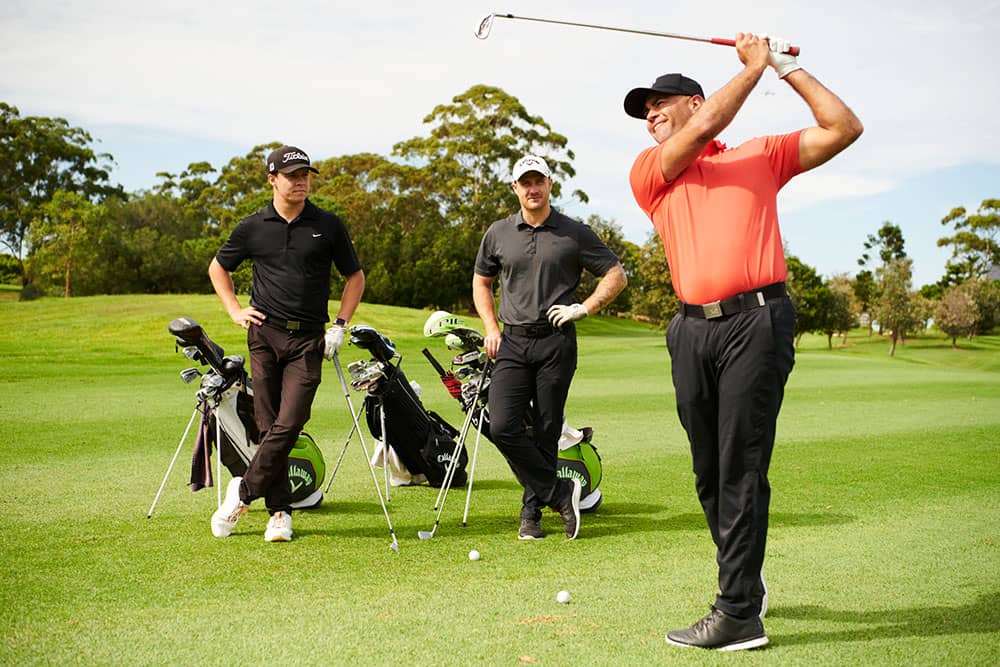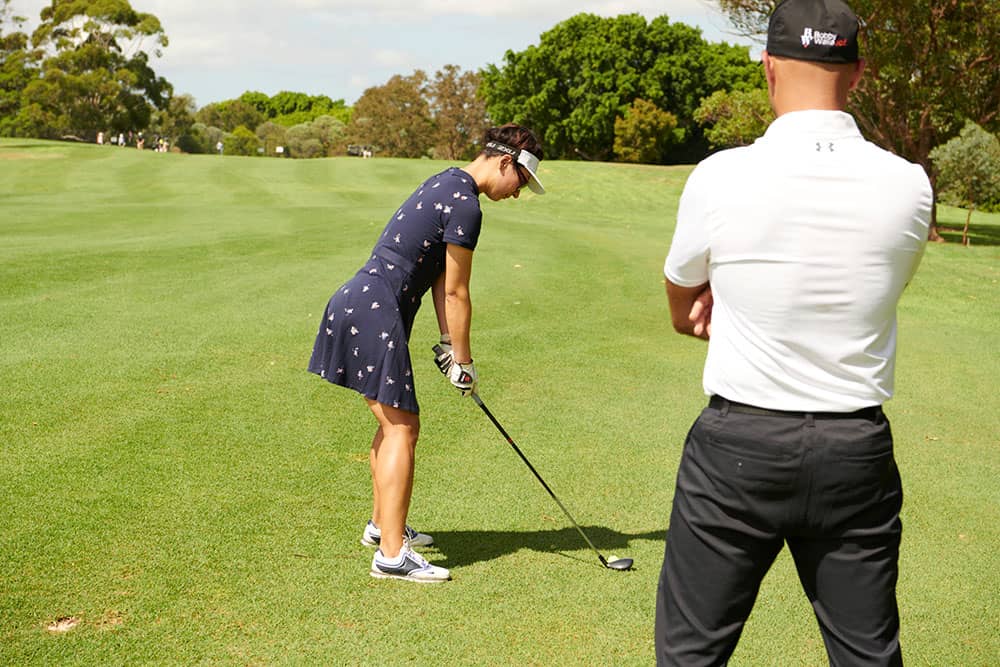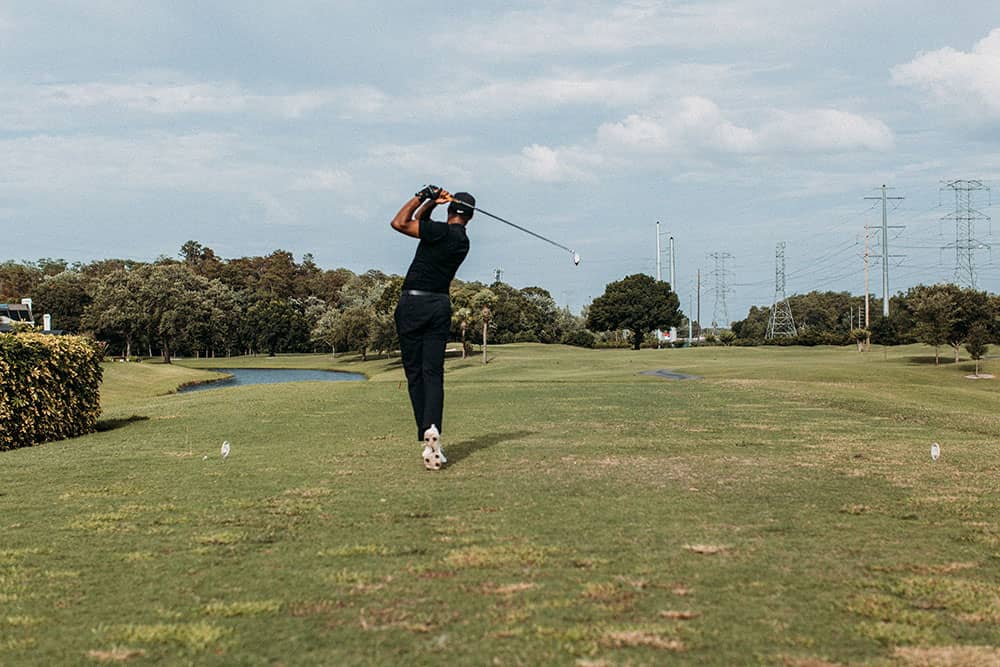If you have wondered whether to choose a hybrid, fairway wood, or long iron, I’ve put together an in-depth guide explaining the differences to be aware of and which situations to select each club for.
What Situations Are Long Irons Ideal For?
Long irons are intended for more penetrating, lower ball flight. They are often used as a tee club on narrower holes. Generally, lower handicap players or players with higher swing speed opt for a long iron.
Players who do not feel confident with hybrids or who hit down on the ball often choose to use a long iron.
Do I Need a Fairway Wood or Hybrid?
While there is some degree of overlap between fairway woods and hybrids, most players carry at least one of each of these clubs in their bag.
Hybrid clubs offer better performance from the rough or fairway bunkers, more forgiveness, a deeper center of gravity, and a higher ball flight. Players typically choose a hybrid if they are looking for a softer landing, less roll out, and higher ball flight.
Some players prefer the shorter shaft length of hybrid clubs and believe they are easier to hit. Fairway woods are a solid option for players seeking the most distance from the tee or fairway.
What Club Can Replace a Hybrid?
Hybrids can be replaced by fairway woods or long irons with similar lofts. For instance, you could choose a 19-degree hybrid, 5-wood, or 3-iron and use them relatively interchangeably, depending on the condition of the course and desired outcome.
Fairway Wood vs. Hybrid Construction
Although hybrids and fairway woods look quite similar, there are various features in their construction that change how they perform.
Fairway woods have a broader sole and larger head than hybrids and are hit further, but lower. Hybrids are more forgiving, and many players find them easier to hit than long irons or fairway woods. Hybrids are often used to replace some of the long irons that are more difficult to hit.
Fairway Woods feature:
- Similar characteristics to a driver but easier to hit from places other than the tee
- Bigger head than hybrids
- The ability to be hit further but lower than hybrids, making them better for use in windy conditions or poor weather
- The longest shaft (outside of a driver)
- Better accuracy for tee shots
Features of hybrids include:
- Generally more forgiving and ideal for players with a higher handicap
- Easier to hit than long irons or fairway woods
- Made with shorter shafts than fairway woods
- Full swings result in a naturally high, arcing shot
- Constructed with smaller heads than fairway woods (but bigger than any of your irons)
- A bigger “sweet spot” than a long iron or fairway wood
Along with improved contact, hybrids are constructed to launch higher and cut through rough better than fairway woods. If you are leaving a large divot with a fairway wood, it often indicates too steep of a swing. Hybrid shapes help you get properly positioned under the ball.
Fairway woods can be used off the tee or from the fairway, but players should expect a noticeable amount of roll. In situations with protected greens or fairway bunkers, players may want to opt for a different club.
When to Use a Hybrid
Since hybrids are extremely forgiving and carry longer than any irons, they can be hit from essentially anywhere on the course in place of a driver. This is particularly true of shorter holes or situations where placement is more important than distance. Their steep landing angle also makes them ideal for clearing hazards or greenside bunkers.
Despite the low lofts on that 3 and 4 hybrids feature, they will often have less roll compared to fairway woods or drivers. Many skilled players can even get hybrids to stop as quickly as they would a mid-iron.
An Understated Hybrid Benefit: Longer Shaft
A significant benefit of hybrids is that they have a longer shaft than irons. The additional shaft length to work with means you can still take a normal swing even if you adjust and choke down when the golf ball is above your feet.
Given the versatility of hybrids and their use for all types of shots and terrain, using a hybrid you are comfortable with can help shave multiple strokes from your score.
Do Hybrids Replace Fairway Woods?
Hybrids are created to combine the best features of fairway woods and irons. If you are struggling to decide what the best approach is for your bag, consider replacing your longer irons and shorter woods with hybrids.
For players with higher handicaps or who would like to hit the ball further, consider combining several hybrids with at least one fairway wood in your bag. Including additional fairway woods in your bag is unrealistic, since they are harder to hit and a 5-wood will perform roughly the same as a 3-hybrid.
Considerations When Choosing Between a Hybrid vs. Long Iron
Consider the following factors when picking the club:
- The course you play on
- Player ability
- Your comfort level with each club
- Distance
- Wind conditions (you’ll want to keep the ball lower and out of the wind on gusty days)
- Fairway or lie condition
Choosing a Golf Club at a Glance
Put simply, I recommend choosing:
- Fairway woods for maximum distance
- Hybrids for versatility, higher launch, and more forgiveness
- Long irons for lower, penetrating ball flight, adverse playing conditions, and maximum workability
Final Thoughts
For the average golfer, the most important aspect of choosing a club is being comfortable with it. Try experimenting with different clubs in different situations to determine which is the best fit for you.






